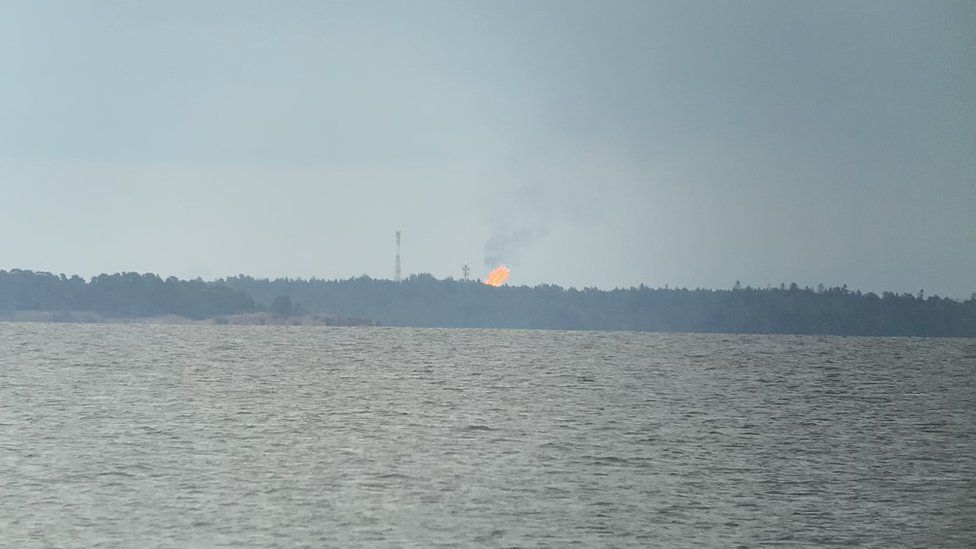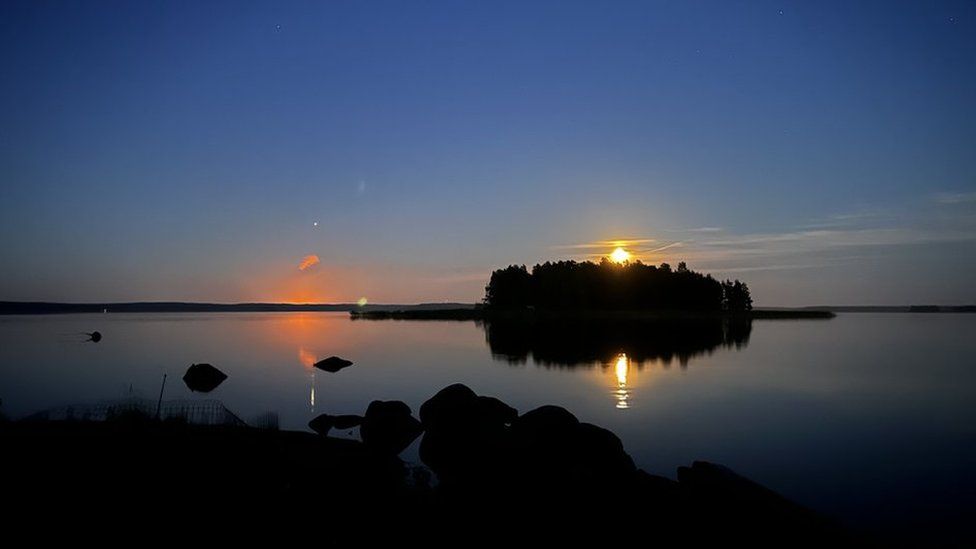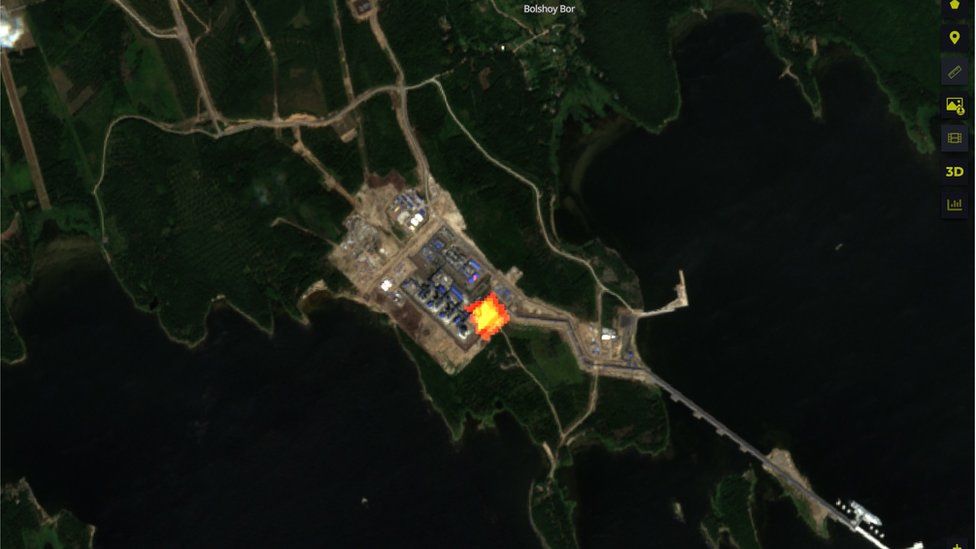Russia Happy to Let Europe Freeze in the Dark This Coming Winter
"[The Russian move] tells Europe that Russia is willing to flare gas instead of sending it to European countries.""It's a reminder about how dependent Europe has been and is on Russian gas.""We either must find new supply sources of gas or find new alternative energy sources."Zongqiang Luo, senior analyst, Rystad energy consultancy"It's been continuous for 75 days.""Gazprom could have stopped flaring if they wanted to. It's likely they're making a deliberate choice to continue to flare."Mark Davis, chief executive, Capterio"The flaring is an environment disaster.""The flaring flame is highly visible, perhaps indicating that gas is ready and waiting to flow to Europe if friendly political relations resume."Rystad energy consultancy, Norway
 |
| This photo was taken by Finnish citizen Ari Laine on 24 July at a distance of around 23 miles (38km) from the Portovaya facility Ari Laine |
Having dramatically reduced the amount of gas flow that the Kremlin is permitting to go to Europe as pay-back for the sanctions against the Russian Federation for sending its military on a mission to destroy Ukraine, the speculation is that all that gas going nowhere must be stored, but that there is limited storage capacity and so the gas must be burnt, effectively destroyed.
Moscow made quite a fanfare over its agreement to supply China and India with gas.These are the two most populous countries on the planet, and their need for energy is manifest, and increasing. So given that contracts have been signed to supply gas for their energy needs, surely that new consumer base more than compensates for the gas being withheld from energy-dependent Europe...?
Is then, the exercise strictly one of poking Europe in the eye, wasting the gas in preference to supplying it where it is desperately needed?
So there is the reality, the choice has been made by the Kremlin to flare off gas on a daily basis at a plant located near the Nord Stream 1 pipeline. This is an unprecedented situation, with experts estimating that the gas being burned reflects a lack of storage to contain the backlog, leading to the huge flare at the new liquefied natural gas plant at Portoaya since June.
Its location adjacent the compressor station at the head of the Nord Stream 1 pipeline used to transport gas undersea to Germany, is a potent message to a country desperate to find alternate sources of energy and dreading the onset of winter and a distracting situation looming in the close future. Analysts from Rystad decribe the situation in environmental disaster terms, estimating the gas being burned off into the atmosphere to be equivalent to around 0.5 percent of daily EU needs.
 |
| The smoke and orange light from the gas flare at Portovaya is seen on the left of this image captured by holidaymaker Elmeri Rasi |
Satellite images of Portovaya reveal the spectacular flare. Since mid-June Moscow has curtailed supplies through Nord Stream 1 as a telling political move despite Russian claims of technical problems hampering production and delivery. Finnish citizens first caught sight of flames from beyond their border, raising awareness of the situation. It is the sheer scale of the burning that puzzles experts, not the flare offs which are not themselves unusual.
Capterio which provides gas flaring solutions for energy companies, believes the flaring could reflect technical faults caused by the trade embargo in Europe leaving Russia incapable of procuring equipment necessary to contain the gas. But they also believe that it's conceivable that the flaring is a deliberate snub at Europe's needs in response to its sanctions of Russia.
What the flare is doing is releasing 9,000 tonnes of C02 equivalent every day including the release of black carbon. Soaring energy prices since the end of COVID lockdowns and international economic recoveries have been complicated by repeat increased costs related to the invasion of Ukraine.
"Of particular concern with flaring at Arctic latitudes is the transport of emitted black carbon northward where it deposits on snow and ice and significantly accelerates melting.""Some highly cited estimates already put flaring as the dominant source of black carbon deposition in the Arctic and any increases in flaring in this region are especially unwelcome."Professor Matthew Johnson, Carleton University, Canada
 |
| A colourised version of this satellite image captures infrared radiation from the burning of gas at the Portovaya plant Copernicus Sentinel/Sentinel Hub/Pierre Markuse |
Labels: Europe Energy Shortage Russian Invasion of Ukraine, Gas Flares, Gazprom, Nord Stream 1, Russia, Sanctions

<< Home